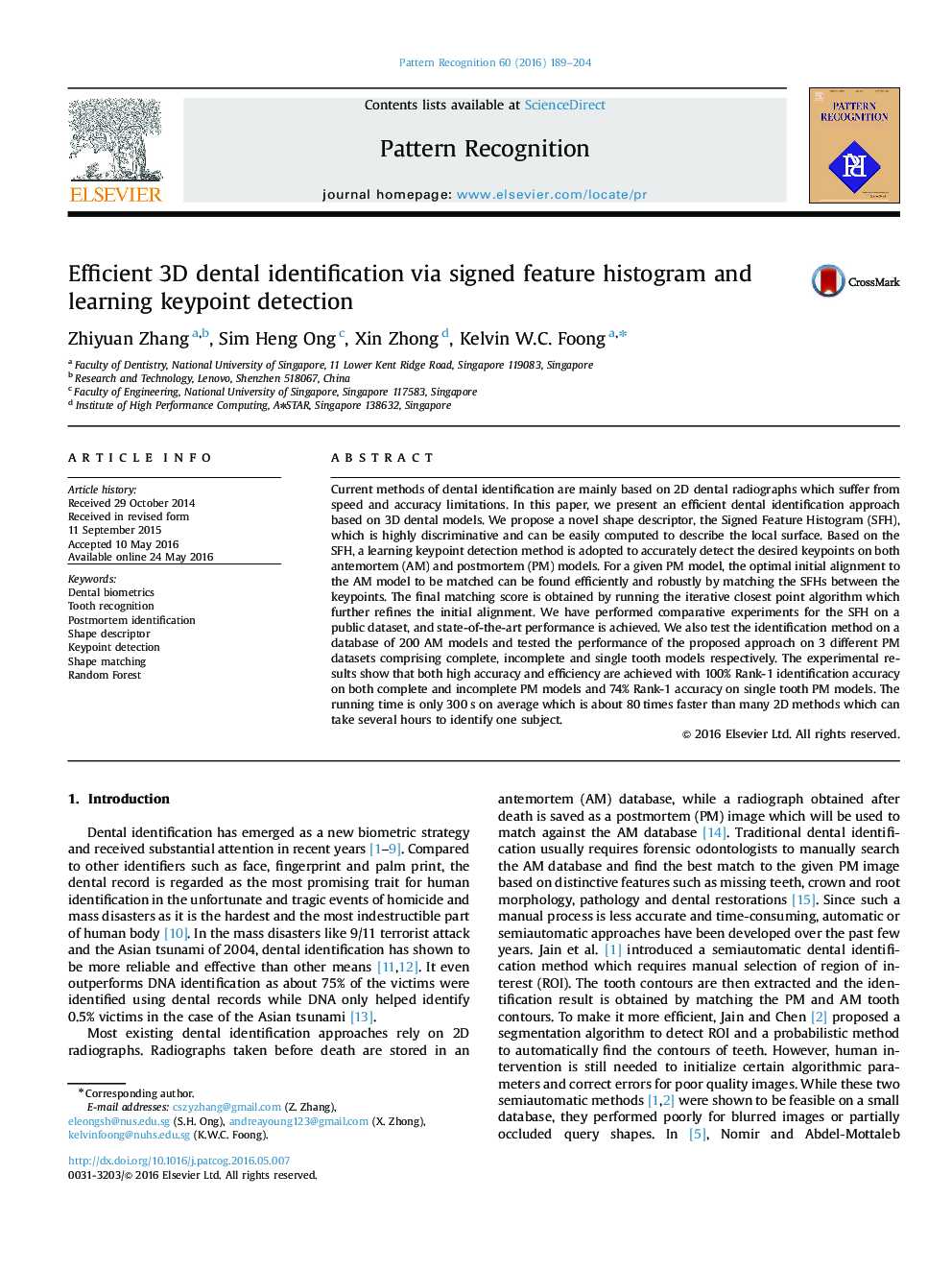| کد مقاله | کد نشریه | سال انتشار | مقاله انگلیسی | نسخه تمام متن |
|---|---|---|---|---|
| 531771 | 869876 | 2016 | 16 صفحه PDF | دانلود رایگان |

• We use a machine learning method to accurately detect keypoints on dental models.
• A novel local shape descriptor is proposed which can be efficiently computed.
• A highly efficient and robust dental identification algorithm is proposed.
• The proposed method is about 80 times faster than traditional 2D based methods.
• Promising results are achieved for single tooth identification.
Current methods of dental identification are mainly based on 2D dental radiographs which suffer from speed and accuracy limitations. In this paper, we present an efficient dental identification approach based on 3D dental models. We propose a novel shape descriptor, the Signed Feature Histogram (SFH), which is highly discriminative and can be easily computed to describe the local surface. Based on the SFH, a learning keypoint detection method is adopted to accurately detect the desired keypoints on both antemortem (AM) and postmortem (PM) models. For a given PM model, the optimal initial alignment to the AM model to be matched can be found efficiently and robustly by matching the SFHs between the keypoints. The final matching score is obtained by running the iterative closest point algorithm which further refines the initial alignment. We have performed comparative experiments for the SFH on a public dataset, and state-of-the-art performance is achieved. We also test the identification method on a database of 200 AM models and tested the performance of the proposed approach on 3 different PM datasets comprising complete, incomplete and single tooth models respectively. The experimental results show that both high accuracy and efficiency are achieved with 100% Rank-1 identification accuracy on both complete and incomplete PM models and 74% Rank-1 accuracy on single tooth PM models. The running time is only 300 s on average which is about 80 times faster than many 2D methods which can take several hours to identify one subject.
Journal: Pattern Recognition - Volume 60, December 2016, Pages 189–204